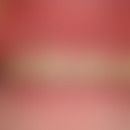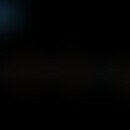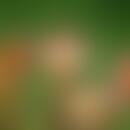Synonym(s)
DefinitionThis section has been translated automatically.
Myrtilli fructus, fruits of the bilberry, which are used phytotherapeutically both fresh(Vaccinium myrtillus fructus recens) and dried(Vaccinium myrtillus fructus siccus). Drug monographed by several commissions (Commission E, ESCOP) and used in herbal medicinal products for the treatment of diarrhea and mild inflammation of the oral and pharyngeal mucosa.
Quality specified in the European Pharmacopoeia.
Caution: Only use dried fruits for diarrhea!
IngredientsThis section has been translated automatically.
Myrtilli fructus contains up to 10 % catechin tanning agents, anthocyanins (e.g. myrtillin), free anthocyanidins, flavone glycosides and fruit acids.
You might also be interested in
EffectsThis section has been translated automatically.
Myrtilli fructus has astringent, antiseptic, antiphlogistic and antioxidant effects.
Field of application/useThis section has been translated automatically.
Blueberry fruits are used for diarrhoea and mild inflammation of the mucous membranes of the mouth and throat. When used internally, the extracts also serve to treat varicose veins and circulatory disorders in the eye.
DosageThis section has been translated automatically.
The usual daily dose is between 20 and 60 g or as 10 percent decoction.
Undesirable effectsThis section has been translated automatically.
There are no known adverse effects.
LiteratureThis section has been translated automatically.
- Ancillotti C et al.(2016) Polyphenolic profiles and antioxidant and antiradical activity of Italian berries from Vaccinium myrtillus L. and Vaccinium uliginosum L. subsp. gaultherioides (Bigelow) S.B. Young. Food Chem 204:176-184.
- Asgary S et al.(2016) Anti-hyperglycemic and anti-hyperlipidemic effects of Vaccinium myrtillus fruit in experimentally induced diabetes (antidiabetic effect of Vaccinium myrtillus fruit). J Sci Food Agric 96:764-768.
- Biedermann L et alo.(2013) Bilberry ingestion improves disease activity in mild to moderate ulcerativecolitis - an open pilot study. J Crohns Colitis 7:271-279.
- Müller D et al. (2012) High performance liquid chromatography analysis of anthocyanins in bilberries (Vaccinium myrtillus L.), blueberries (Vaccinium corymbosum L.), and corresponding juices. J Food Sci 77:C340-345.
- Schilcher H (2016) Leitfaden Phytotherapie, Urban & Fischer Verlag, Munich, p. 153 f.
- https://arzneipflanzenlexikon.info/heidelbeere.php




